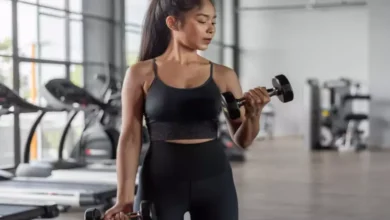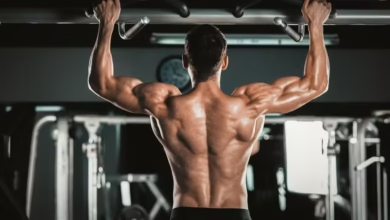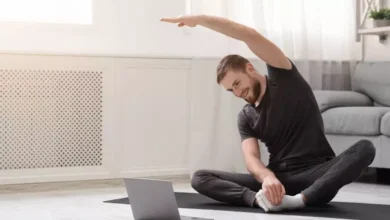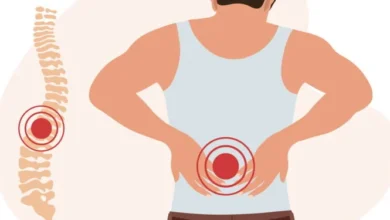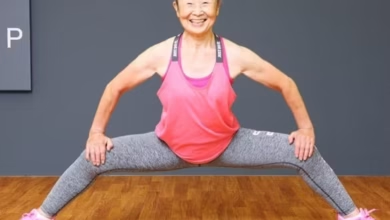How to Build Muscle with No Gym Equipment
Contrary to popular belief, you don’t need a gym full of weights or fancy machines to build muscle. With the right approach, your own body is more than enough to develop strength, definition, and endurance. Whether you’re working out in a small apartment or just prefer training at home, this guide will show you how to grow muscle using bodyweight only.
Is It Really Possible to Build Muscle Without Equipment?
Yes, 100%. While external resistance (like dumbbells) can be helpful, muscle growth is primarily driven by progressive overload — which means increasing the challenge over time.
You can build muscle at home by:
- Increasing reps and sets
- Slowing down the tempo of each rep
- Using harder variations of exercises
- Minimizing rest between sets
- Focusing on form and muscle engagement
It’s about intensity and consistency, not tools.
Focus on Compound Movements
Compound exercises work multiple muscle groups at once, giving you the most return for your effort. These should form the core of your routine.
Key bodyweight compound moves:
- Push-ups (chest, triceps, shoulders)
- Squats (legs, glutes, core)
- Lunges (legs, glutes, stability)
- Planks (core, shoulders)
- Glute bridges (glutes, lower back)
- Dips (triceps, chest — using a chair)
These movements can be adapted to your level and gradually intensified.
Muscle-Building Bodyweight Exercises
Here’s how to target specific muscle groups without equipment:
Chest & Arms
Push-Ups
Start with regular push-ups. As you progress:
- Slow down each rep
- Add pause at the bottom
- Try incline, decline, or diamond push-ups for variety
Chair Dips
Use a sturdy surface. Lower your body slowly and push back up, keeping elbows close to your body.
Legs
Bodyweight Squats
To increase difficulty, try:
- Narrow-stance squats
- Jump squats
- Bulgarian split squats (back foot on chair)
Wall Sits
Hold a seated position against a wall for time. Start with 30 seconds and build up.
Lunges
Forward, reverse, or walking lunges build serious strength and stability.
Core
Planks
Start with 30 seconds. Gradually increase hold time or try side planks and plank taps.
Leg Raises
Lie flat, raise legs slowly, and control the movement on the way down.
Bicycle Crunches
Targets obliques and lower abs. Keep your core tight throughout.
Structure a Muscle-Building Routine at Home
A simple plan to follow 3–4 times per week:
Warm-Up (5 minutes):
- Arm swings
- Leg swings
- Light jumping jacks
- Shoulder rolls
Workout (3 Rounds):
- 10–15 push-ups
- 15–20 squats
- 10 dips (use chair)
- 12 lunges (each leg)
- 30–60 sec plank
- 10 glute bridges
Rest: 30–60 seconds between exercises and 1–2 minutes between rounds
Cool-Down (5 minutes):
- Stretch legs, arms, and shoulders
- Forward fold
- Deep breathing
How to Apply Progressive Overload Without Weights
- Add reps: Increase the number of repetitions each week
- Add sets: Go from 2 to 3 or even 4 rounds
- Change tempo: Try 3 seconds down, 1 second hold, 2 seconds up
- Reduce rest time: Shorter rest = more challenge
- Advance variations: Move from basic to intermediate/advanced forms
Keep a notebook or app to track your progress. Watching your strength grow is incredibly motivating.
Fueling Muscle Growth
Exercise is half the battle — the other half is nutrition and recovery. Make sure you’re:
- Eating enough protein (eggs, chicken, beans, tofu, etc.)
- Staying hydrated
- Getting 7–9 hours of sleep
- Taking rest days for muscle repair
Muscle growth happens during rest, not just during workouts.
Final Thoughts
You don’t need a single dumbbell to get strong. With bodyweight training, intentional progress, and consistent effort, you can absolutely build lean muscle at home.
Train smart. Stay patient. Push yourself a little more each week — and watch your body change.

Hello! My name is Alan Teixeira and I am passionate about helping people live healthier, more balanced lives. From mindful eating to daily habits that promote physical and mental well-being, I believe that small, consistent changes can lead to powerful transformations.
I created this blog to share practical tips, reliable information, and thoughtful insights that can inspire you to take better care of yourself—with balance, mindfulness, and positivity.
If you are looking to improve your health, nourish your body, and build a lighter, more fulfilling routine, you are in the right place. Welcome!

